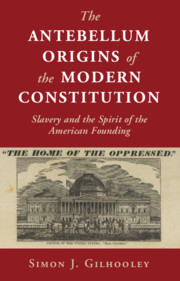Thanks to the research of royal genealogist (and our dear friend) Hein Bruins, it has become known that Don Rodrigo Moreno y Borbón-Dos Sicilias and Doña Casilda Ghisla Guerrero-Burgos y Fernández de Córdoba, XXI Duquesa de Cardona, were married in 2020.
 |
| Infanta Alicia of Spain, Dowager Duchess of Calabria, and her grandson Don Rodrigo Moreno y de Borbón attend the wedding of the Prince of Asturias in 2004. Photograph (c) Julián de Domingo. |
 |
| Rodrigo's maternal grandfather: HRH Infante Alfonso of Spain, Duke of Calabria. |
Born in 1962, Rodrigo Moreno y Borbón-Dos Sicilias is the eldest of the seven children of Don Iñigo Moreno y Arteaga (b.1934), Marqués de Laserna, and his wife Princess Teresa of Bourbon-Two Sicilies (b.1937). Rodrigo's paternal grandparents are Don Francisco de Asís Moreno y de Herrera (1909-1979), Conde de Los Andes, and his wife Doña Maria Teresa de Jesús de Arteaga y Falguera (d.1962), Marquesa de La Eliseda. Rodrigo's maternal grandparents are Infante Alfonso of Spain (1901-1964), Duke of Calabria, and his wife Princess Alice of Bourbon-Parma (1917-2017). Rodrigo's first cousin is Prince Pedro of Bourbon-Two Sicilies, Duke of Calabria. Rodrigo Moreno y de Borbón is a great-great grandson of King Alfonso XII of Spain (1857-1885) and his wife Queen Maria Cristina (1858-1929; née Archduchess of Austria).
 |
| Casilda Ghisla's maternal grandfather: HE Don Luis Jesús Fernández de Córdoba y Salabert, XVII Duque de Medinaceli. |
Born in 1981, Casilda Ghisla Guerrero-Burgos y Fernández de Córdoba is the only child of the late Doña Casilda Fernández de Córdoba y Rey (1941-1998), Duquesa de Cardona, and her second husband Don Antonio Guerrero Burgos (1924-1984). At her baptism in October 1981, Casilda Ghisla had Doña Angela Téllez-Girón y Duque de Estrada, XVI Duquesa de Osuna, and Don Francesco Guerrero Burgos stand as her godparents. Casilda Ghisla's maternal grandparents are Don Luis Jesús Fernández de Córdoba y Salabert (1880-1956), XVII Duque de Medinaceli, and his second wife Doña María de la Concepción Rey de Pablo Blanco (d.1971). The Duchess of Cardona was previously married to Emilio Prieto y Reina; from this marriage she has one daughter, Doña Casilda Prieto y Guerrero-Burgos. The Duchess of Cardona's maternal aunt was the well-known Doña Victoria Eugenia Fernández de Córdoba y Fernández de Henestrosa (1917-2013), XVIII Duquesa de Medinaceli, who counted among her children-in-law a Prince zu Hohenlohe-Langenburg and a Princess of Orléans-Bragança.
Don Rodrigo Moreno y Borbón-Dos Sicilias and Doña Casilda Ghisla Guerrero-Burgos y Fernández de Córdoba, Duquesa de Cardona, are fourth cousins. The couple both descend from Don Andrés Avelino de Arteaga y Carvajal Vargas (1807-1850), marqués de Valmediano, and his wife Doña Fernanda María de Silva-Bazán y Téllez-Girón (1808-1879).






































